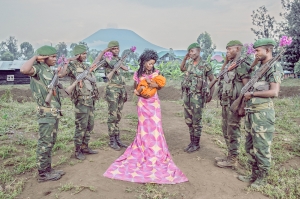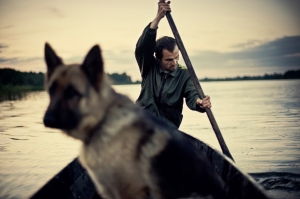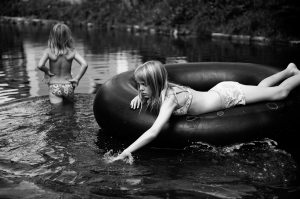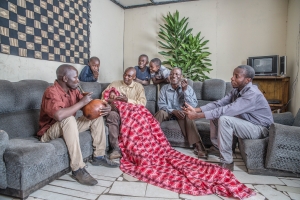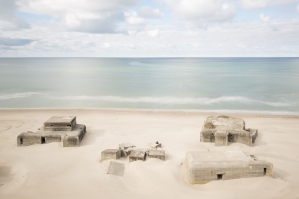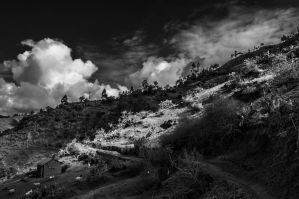Winners of the Alfred Fried Photography Award 2015
Sub-Categories
-
 The winners of the Alfred Fried Photography Award 2015
The winners of the Alfred Fried Photography Award 2015
-
The winners of the Alfred Fried Photography Award 2015, who received the Alfred Fried Peace Medal are (in alphabetical order):
"Downshifting in Belarus", Dmitrij Leltschuk, Germany
"Ich bin Waldviertel", Carla Kogelman, The Netherlands
"Look at Me, I am Beautiful.", Patricia Willocq, Belgium
"Regelbau", Arthur van Beveren, The Netherlands
"Tururo Roots", David Martín Huamaní Bedoya, Peru
Click on the title to see the complete story.
Winner of the Alfred Fried Photography Award's world-best picture on the theme of peace, worth € 10000, is Patricia Willocq, Belgium, with an image from her work "Look at Me, I am Beautiful."
The winning picture will be on display for one year at the Austrian Parliament.
-
 Dmitrij Leltschuk, Germany
Dmitrij Leltschuk, Germany
-
Downshifting in Belarus
Downshifting is a social trend in which individuals escape consumerism and move away from big cities and industrial centres to the countryside. Generated mostly by environmental, social and housing problems, downshifting has been gaining more and more strength in Belarus. The villages Chereshlia and Plissa in the Novogrudok region of the Grodno area have become a social refuge for young families with minimal dependence on the state. Jury statement: Today the dominant collective rational agreement is that everybody is responsible for everybody. A fragile balance of deterrence prevails, inspired by agony. Discord leads to divisions, violence, injustice, class war, to social strata opposing each other, to ecologic sins, economic exploitation, to excess without a sense of proportion. Everybody strives to gain status just for themselves. Ideals, values and visions are subordinated to the God of mammon. But there is another way, as Hamburg-based Ukrainian photographer Dimitrij Leltschuk shows. He visualized the trend of an increasing number of people resisting capitalism and inhuman utilitarianism and searching for alternative forms of living. This can mean retreating to the country, as Leltschuk demonstrates. The people in his pictures deliberately go for reduction. They search for happiness in a simple life. Peace, in a consumer society based on compromises and fear, in reality starts with small things: gestures, thoughtfulness, acceptance. The magic words are independence and freedom.
-
 Carla Kogelman, The Netherlands
Carla Kogelman, The Netherlands
-
Ich bin Waldviertel
Hannah & Alena are two sisters living in a small village with 170 inhabitants in the Waldviertel, the rural area between Vienna and the Czech Republic. Jury statement: In an idealized world, peace is the visualization of the paradise lost long ago. And, as life goes…: Suddenly you hit on the series by Dutch photographer Carla Kogelman. Her work comes across as a bit old-fashioned. It plays with the idea of the ‘good old times’, the atmosphere of a happy childhood. Carefree, honest, unpretentious, incorruptible. What you see in her black-and-white photographs is an era of inquisitiveness, cheerfulness and warmth. It makes you all melancholy and calm. These are moments of sheer magic that Kogelman has captured. Moments of a pristine nature, intact. Children splash around in the lake, romp through the garden, wade through the mud. Free, uninhibited, inspired, buoyed up by life, air, twilight. They play freely, explore nature, look for earthworms, snails and salamanders. Unbound, they fly through the air, play in the house, laughing. In harmony with nature, often naked. Fairies and fauns appear, dancing in front of Kogelman’s lens. This is what peace looks like. Kogelman hits on the nerve of our times: a longing for the past and for slowness in a world of superficial speed. In her pictures she evokes a diffuse lightness of being. The series hits you without warning – and touches you. Magical and outmoded. Peace is love, tolerance, acceptance and freedom. Emotionally free, rationally unbound. Peace emerges from within, from contentment, serenity, confidence and appreciation.
-
 Patricia Willocq, Belgium
Patricia Willocq, Belgium
-
Look at Me, I am Beautiful.
Everywhere in the world, women are vulnerable from a very young age. They struggle to put an end to domestic abuse, they fight for their rights, for equality, for justice and for freedom from violence.
For years, the city of Goma, in the Democratic Republic of the Congo, witnessed horrific war crimes and sexual violence used as a weapon of war against children and women and perhaps even men. In recent years, more and more local initiatives and international programmes have been developed to help survivors of domestic abuse and sexual violence during war to reintegrate society and take back control of their lives.
In this series of pictures you discover the life of Esther, a little girl born of rape, going through all the big milestones of her life: her birth, her first steps, her first day at school, her wedding, her first day as a mother, etc. Esther is surrounded by men who support her and protect her.
Freedom from violence.
All the children you see in the pictures are born of rape…all the women have been involved in sexual abuse. But they are victims no more! They are survivors, beautiful survivors, who want the world to look at them as such!
This work was produced in August 2014 to promote peace and to support the work a local NGO (HOLD DRC) who empowers children born of rape and women survivors of sexual violence! Jury statement: The reality of peace is the result of power, repression, intolerance, violence, death and destruction, the result of sententious words, hypocritically declared intentions, bilateral laws, glib agreements and declarations of peace often followed by diametrically opposed actions. Insofar Patricia Willocq’s strangely irritating series comes across as staged and kitschy. But wait! Willocq deliberately banks on irritation, on provocation. All women are wearing colourful festive clothes, they are cheerful and smile. But it is precisely this brash idyll that reveals the false bottom: all the women in the pictures of the Belgium-based photographer are victims of rape. Her exaggerated staging returns self-worth and dignity to these women. The series is like an African fairy tale, in which tormentors become protectors, good wins over bad. An analogy for the good life, with a right to childhood, schools, a profession, family, self-realization. Not a melancholy but a fierce humanitarian statement that peace is mainly about tolerance, respect and appreciation.
-
 Arthur van Beveren, The Netherlands
Arthur van Beveren, The Netherlands
-
Regelbau
Regelbau is a study on the German standardized bunker from World War Two and its current state, both as a historical object and a part of present nature. A fascination for modernist materials, such as concrete and steel, and how time transforms these buildings into modern time ruins. But also, a fascination for the idea of building permanent fortifications and their form and size. In less than three years, tens of thousands of concrete structures were erected along the European coasts and far inland as part of the Atlantikwall. For the last 15 years I have travelled the European continent to document these bunkers. It brought me to remote places and it helped me grasp the geography of war and peace, too. The German bunkers show how practical solutions lead to modernist monuments. I also try to open a discussion on their history and whether we should preserve them for future generations, to remind us how far dictators go to preserve peace in their world. Jury statement: In reality peace often takes on the impression of a paradise lost. Bleak, barren, lifeless. Arthur van Beveren’s series Regelbau documents relicts of seaside bunkers from the Second World War. The ruins look like stranded maritime giants. The closer you get to the desolate rumps, the spookier they look. They rest in the spray, are washed round, hollowed out. Their aura does not meet any creaturely needs. The giants come across as bizarre, sometimes like sand castles, usually hostile. The photographs’ atmosphere of waiting reflects pain, resentment, death, destruction. Yet van Beveren does not create a memorial to these bunkers but a warning against war, because peace is more than the absence of discord. Eventually you realize that the sea prevails slowly but surely against the built artifice and nature is reclaiming its space.
-
 David Martín Huamaní Bedoya, Peru
David Martín Huamaní Bedoya, Peru
-
Tururo Roots
Because of the great migration of people from the countryside to the city in Peru from the 1960s onwards, customs and experiences of coming generations have begun changing to the point of forgetting, in many cases, their indigenous past.
Tururo Roots is about finding that past within our own families (in this case my family), those families whom we often do not see for years and we know through third parties, who live far away in some forgotten place in the country where the relationship of man and nature is still very much alive and latent, where their customs, their beliefs, their joys, their weaknesses, etc., remain through time.
This series was held in the town centre of Tururo, in the district of Chincheros in Apurimac, Peru. Jury statement: In an ideal world, peace is the impression of a transcendental paradise. In a contemplative atmosphere that our everyday rationality regards as irrational and kitschy, man and woman, humans and animals, live in harmony with each other. There is equanimity, calm, gracious silence. There is no possession or claim to profit. Envy, resentment and fear are absent. The work of Peruvian photographer David Martin Huamani Bedoya, who lives in Lima but comes from the small village of Tururo, captivates the viewer with its archaic quality. The archaic sparsity and clarity of the simple rural structures correlates to the photographic visualization of the theme. This is no misty-eyed gaze on the beauty of mountains and clouds but a search for roots: the roots of the people, of life, a quest for sense, found in the infinity of indigenous families. Despite emigration, exploitation and separation, they feel connected, they form a unified whole, across generations, and even including nature and the environment. Peace, expressed deliberately in calm, old black-and-white, does not just mean the coexistence of the people in the region. Rather, it is a synonym: Everybody is responsible for everybody. Everybody feels responsible for everybody.
